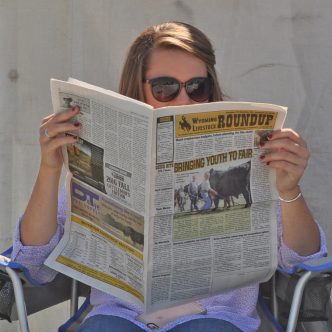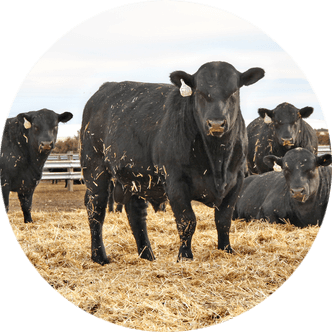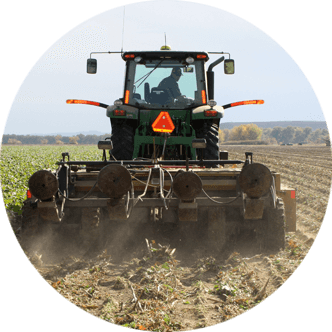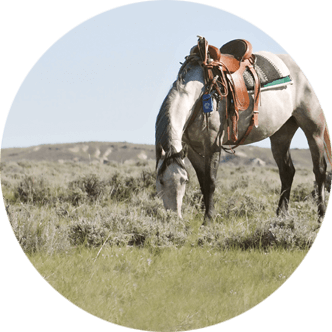Fall Checkpoints: UW sheep specialist discusses decisions shaping next year’s lamb crop
It’s the time of year when brief, chute-side conversations at ram sales and ranch visits turn into quick knowledge exchanges.
In a fast-paced world, sometimes a few timely reminders go a long way, especially on topics that keep coming up.
The following is a concise fall-themed roundup of what producers are asking – and what science is saying.
Recordkeeping and culling
Whether running a large commercial flock or a smaller outfit, not everyone has the luxury of detailed recordkeeping, and even fewer consistently use the records they do keep.
When it comes to fall culling decisions, many producers still rely on what they can see – bags, body condition and teeth. But udder health is a harder issue to evaluate because most mastitis problems, especially subclinical ones, happen early in lactation long before fall comes around.
For those who do keep lambing records, now is the time to revisit them.
Collaborative research from the University of Wyoming, the U.S. Department of Agriculture’s (USDA) Sheep Experiment Station and Montana State University shows subclinical mastitis – infections one can’t see – can cost producers 10 to 17 pounds of lamb weaned per ewe.
At two dollars per pound, this is $20 to $30 lost without any clear symptoms.
More obvious clinical mastitis – swelling, heat or complete udder loss – may only affect six to eight percent of ewes, per USDA data, but it remains a leading reason for premature culling.
Physical signs such as lumps, uneven udder halves or a completely non-functional side often point to past intramammary infections. Large, uniform swelling can be a red flag for ovine progressive pneumonia (OPP), while elongated or misshapen teats may signal long-term breakdown of udder tissue.
Ewes with these problems almost always underperform, and fall provides the best opportunity to cull them so poor udder health and reduced lambing performance are not carried into the next season.
Teat placement matters
Another often-overlooked trait is teat placement, and it turns out it matters a lot.
Research shows younger ewes with poorly positioned teats – pointing straight down or straight out to the side – tend to wean fewer lambs.
Teat placement is scored from one to nine. One means vertical, nine means horizontal and five is ideal.
A score of five sets the teats at about a 45-degree angle, which makes the ewe less susceptible to mastitis and makes it easier for lambs to latch on quickly.
Ewes with scores between four and seven consistently weaned heavier lambs, while those scoring three or less or eight or more weaned up to three times less in one-year-old ewes. This is a huge loss in early productivity.
Remember, 45-degree teats mean healthier udders and stronger lambs.
This fall, consider scoring teat placement at weaning. It’s a quick, visual tool producers can use chute-side to make smarter replacement and culling decisions. In the long run, small changes in how producers evaluate udders can lead to big gains in productivity.
Ewe body condition and flushing
Body condition is an important return-on-investment indicator which should not be overlooked during fall evaluations.
At breeding, ewes should ideally score between 2.5 and 3.5 on a five-point scale.
Identifying ewes in poorer condition is essential, as culling or treatment decisions often hinge on whether low condition is the result of poor dentition or underlying illness.
A substantial body of international research demonstrates improving a ewe’s body condition score from two to three prior to breeding can result in approximately 20 percent greater lamb survival to weaning.
For prolific ewes raising multiple lambs, this improvement may translate into an additional 20 to 30 pounds of lamb weaned per ewe, according to several studies.
The challenge, of course, lies in regaining any lost body condition.
Monitoring and managing body condition leading into breeding is one of the most straightforward nutritional strategies for return on investment, but these decisions must be made early – at weaning and during the pre-breeding period – to give producers the best chance of success.
Flushing refers to the practice of increasing a ewe’s energy intake before and during breeding season to enhance ovulation rates and improve conception.
Studies have shown flushing can result in a 10 to 20 percent increase in lambs born per ewe, particularly in those of average to below average body condition.
The most bang for the buck comes from flushing ewes in these categories, as overconditioned ewes show little response.
Flushing can be as subtle as moving ewes to a fresh pasture with higher-quality forage, but the response is often maximized with supplementary feeding of high-energy feeds.
Not all feeds are created equal. For example, alfalfa pellets provide about 1.15 Megacalories (Mcal) per pound of metabolizable energy (ME) and 55 to 60 percent total digestible nutrients (TDN), while whole-shell corn provides about 1.54 Mcal per pound ME and 88 to 90 percent TDN.
Corn is more energy dense thanks to its high starch content and greater rumen fermentability, meaning more of its energy becomes available to the ewe quickly.
Research dating back 30 years shows feeding 0.75 to one pound of corn daily on dormant cool season pasture can enhance flushing without reducing forage intake.
Cost matters too. At ballpark current prices, alfalfa pellets at $250 per ton cost 12.5 cents per pound and corn at $180 per ton costs nine cents per pound.
On an energy basis, alfalfa pellets work out to about 10.9 cents per Mcal, while corn costs about 5.8 cents per Mcal.
So, if producers feed one-half pound per head per day, they’re paying about 2.9 cents per head per day for corn and 5.5 cents per head per day for alfalfa pellets. This is a difference of 2.6 cents per head per day or $2.60 per 100 ewes per day, which is significant when feeding over multiple weeks.
Keep in mind early recognition of pregnancy is the most critical phase prone to conceptus loss, so a good flushing program should begin two to three weeks before ram turnout and continue 30 to 45 days into breeding.
It’s easy to see quality and quantity of pastures in the fall are not what they were in May and June. Not only does digestibility and protein content decline, but the mineral composition of many grass species also drops.
Offering a vitamin and mineral supplement free-choice in a location where uniform consumption can be achieved is key.
A common challenge is getting all ewes to consume free-choice mineral consistently.
Mixing mineral with a supplemental feed, especially during flushing, can improve uniformity of intake.
Another strategy is ordering a winter supplement already fortified with vitamins and minerals. While it may add to the upfront cost, it ensures the “non-consumer” portion of the flock is minimized, reducing the risk of production losses from deficiencies.
Bottom line
There are always more tasks in the day than hours to do them, but the planning producers invest in the fall will pay dividends across the production year.
Opportunity often turns on the hinges of small, deliberate choices. Whether it’s identifying ewes with mastitis-damaged udders, poor teat angles which will hinder next year’s lambs or thin body condition scores which can be corrected now with the right supplement, what one observes this fall reflects the story ewes have been writing for months.
It is also a producer’s best chance to step in and change the ending.
Using observations, records and a measure of daily foresight to guide culling, feeding and breeding decisions is what ultimately shapes the flock’s future productivity.
Dr. Whit Stewart is the University of Wyoming Extension sheep specialist and associate professor in the Department of Animal Science. He can be reached at whit.stewart@uwyo.edu.





